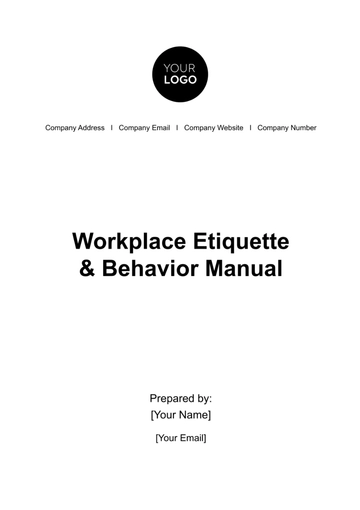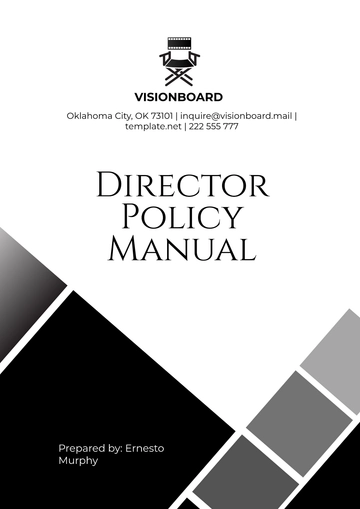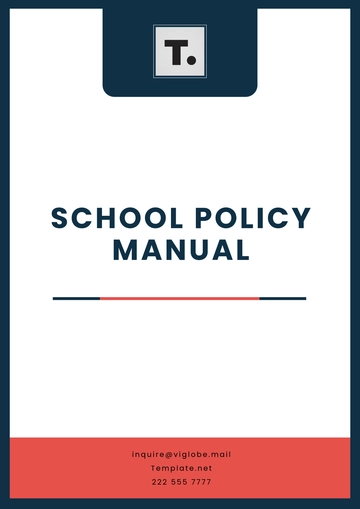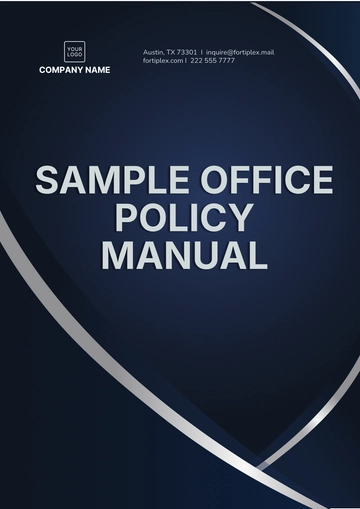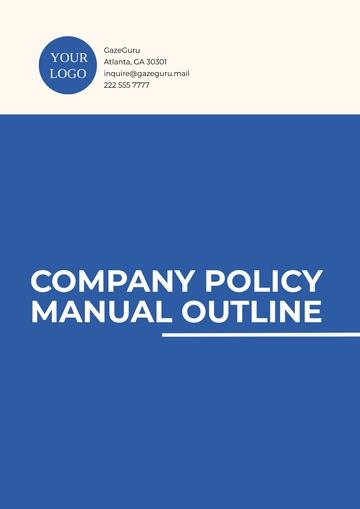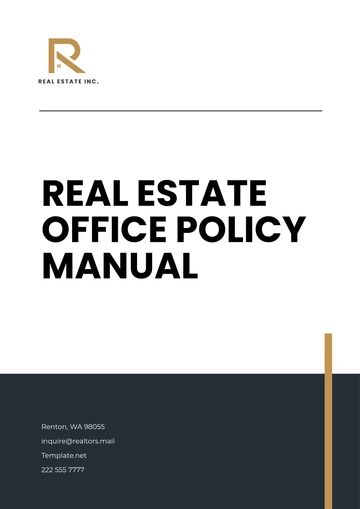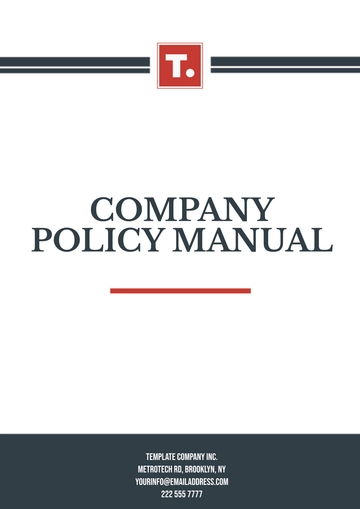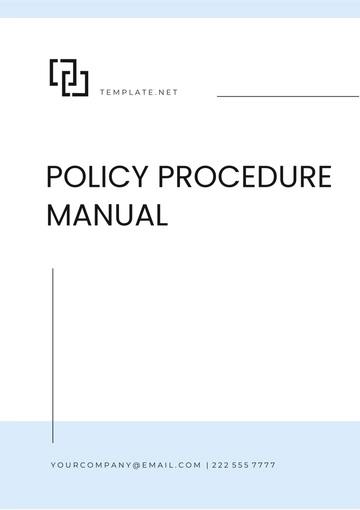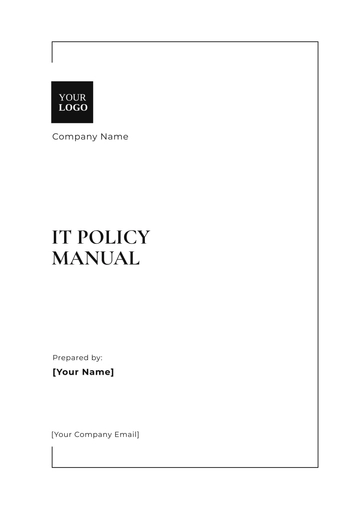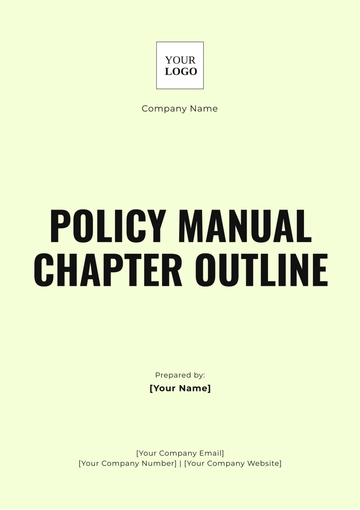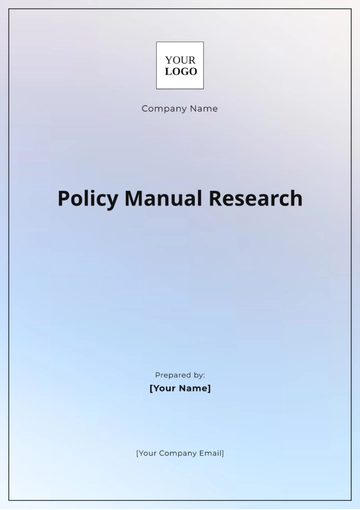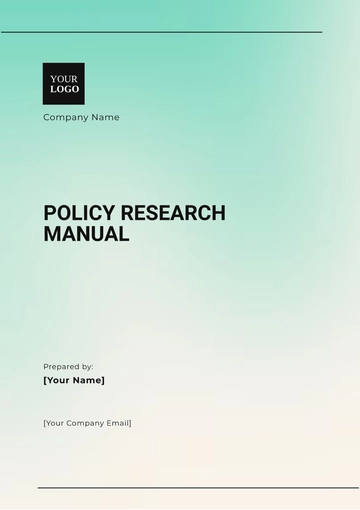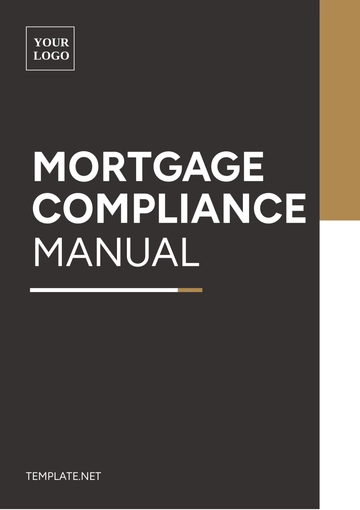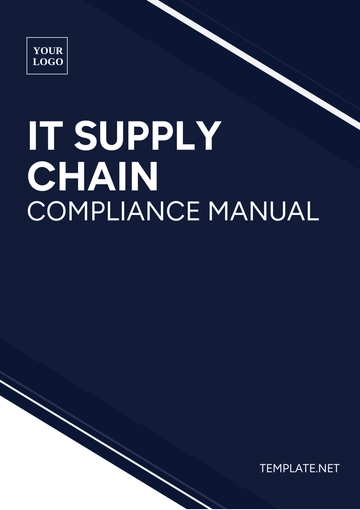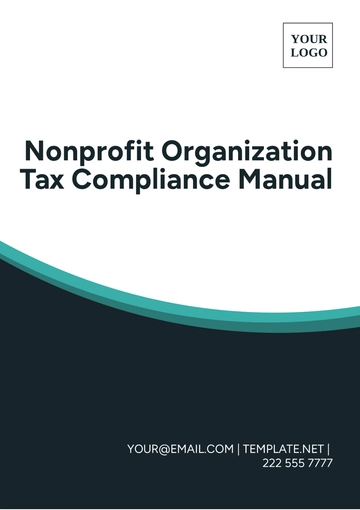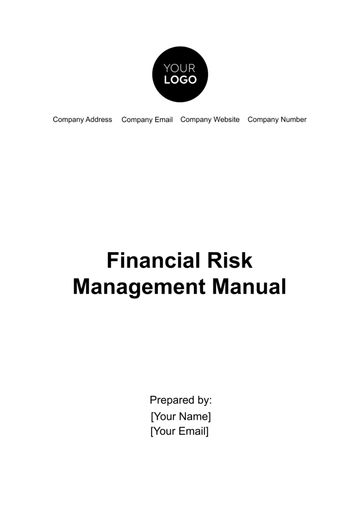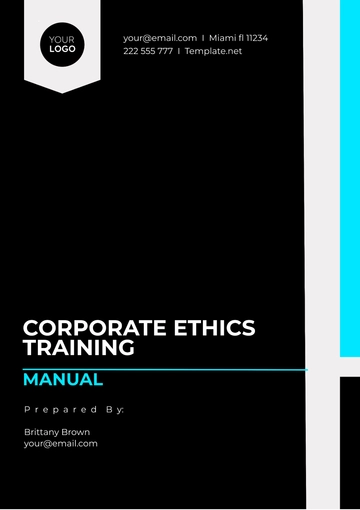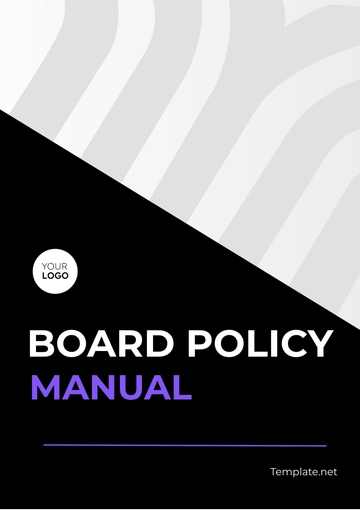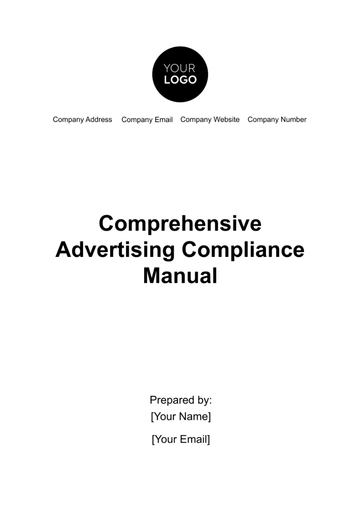Free Board Policy Manual
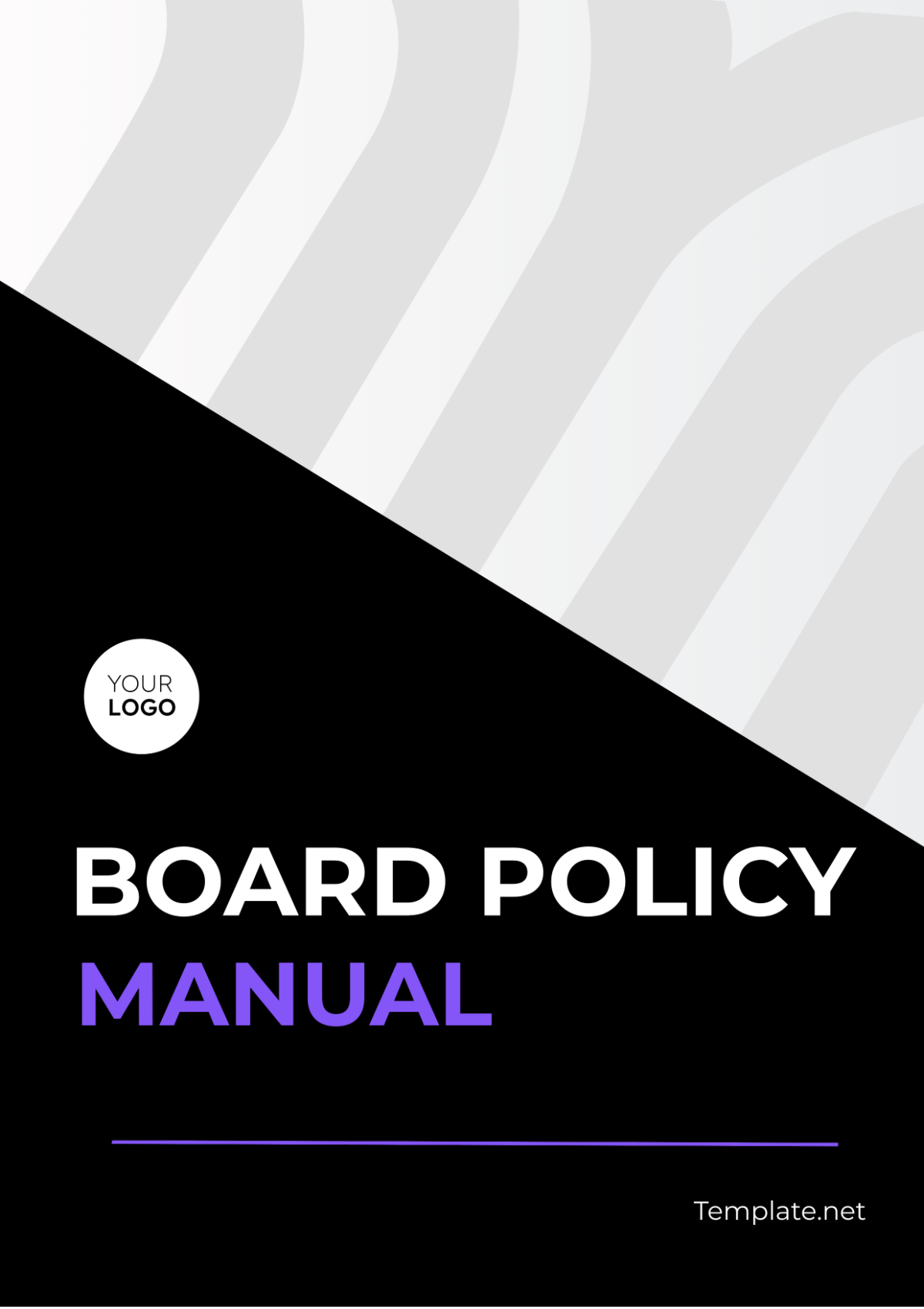
Name | Company | Department | Date |
|---|---|---|---|
[NAME] | [YOUR COMPANY NAME] | [YOUR DEPARTMENT] | [DATE] |
I. Introduction
The Board Policy Manual serves as a guiding document outlining the policies, procedures, and guidelines established by [YOUR COMPANY NAME] board of directors. This manual aims to ensure consistency, transparency, and accountability in decision-making processes across all levels of the organization. It is imperative for [YOUR DEPARTMENT] members to familiarize themselves with the contents of this manual to uphold the values and principles upheld by the company.
Purpose:
The purpose of this manual is to provide a comprehensive framework for [YOUR COMPANY NAME] board policies, which govern the organization's operations, interactions, and strategic direction. By adhering to these policies, the board, management, and employees contribute to the sustained success and ethical conduct of the company.
Scope:
This manual encompasses policies related to [YOUR COMPANY NAME] governance structure, decision-making processes, conflict resolution, ethical standards, and regulatory compliance. It applies to all board members, executives, employees, and stakeholders involved in the operations and management of the company.
II. Governance Structure
The governance structure of [YOUR COMPANY NAME] is designed to ensure effective oversight, accountability, and strategic direction.
Board Composition:
The board of directors comprises [X] members, including [YOUR NAME], the Chairperson.
Board members are selected based on their expertise, experience, and alignment with the company's values and objectives.
Board Meetings:
Board meetings are held [FREQUENCY], with an agenda circulated beforehand by the Secretary.
Attendance of board members is mandatory, and absenteeism should be communicated in advance.
Decisions are made through [VOTING MECHANISM], with minutes recorded by the Secretary for documentation.
III. Decision-Making Processes
Effective decision-making processes are crucial for [YOUR COMPANY NAME] success and sustainability.
Decision Authority
The board retains ultimate decision-making authority on matters of strategic significance, including mergers, acquisitions, and major investments.
Management is responsible for operational decisions within their delegated authority, guided by board policies and strategic objectives.
Decision Criteria
Decisions are guided by the principles of [YOUR COMPANY NAME] mission, vision, and core values, ensuring alignment with long-term goals and stakeholder interests.
Factors such as financial feasibility, risk assessment, and legal compliance are considered in decision-making processes.
IV. Conflict Resolution
Conflict is inevitable in any organization, but effective resolution mechanisms mitigate its impact on [YOUR COMPANY NAME] operations.
Conflict Identification
Conflicts may arise from divergent interests, miscommunication, or resource allocation issues.
It is essential to promptly identify and address conflicts to prevent escalation and maintain a harmonious working environment.
Conflict Resolution Strategies
Open Dialogue: Encourage open and honest communication to understand different perspectives and find common ground.
Mediation: Engage neutral third parties to facilitate constructive dialogue and negotiate mutually acceptable solutions.
Escalation Protocol: Establish clear procedures for escalating unresolved conflicts to higher levels of authority for resolution.
V. Ethical Standards
Ethical conduct is the cornerstone of [YOUR COMPANY NAME] reputation and integrity.
Code of Conduct
[YOUR COMPANY NAME] upholds a strict code of conduct outlining expected behavior, including honesty, integrity, and respect for diversity.
All employees are required to familiarize themselves with the code of conduct and adhere to its principles in all professional interactions.
Conflict of Interest
Employees and board members must disclose any potential conflicts of interest that may compromise their impartiality or objectivity.
The company has established procedures for managing conflicts of interest, including recusal from decision-making processes and the appointment of independent advisors when necessary.
VI. Regulatory Compliance
Compliance with applicable laws, regulations, and industry standards is essential for [YOUR COMPANY NAME] operations and reputation.
Legal Compliance
[YOUR COMPANY NAME] is committed to complying with all relevant laws, regulations, and licensing requirements in jurisdictions where it operates.
The legal department is responsible for monitoring changes in legislation and ensuring that policies and procedures remain up-to-date and in compliance with legal requirements.
Data Protection and Privacy
Protecting the privacy and confidentiality of customer and employee data is paramount for [YOUR COMPANY NAME].
The company has implemented robust data protection measures, including encryption, access controls, and regular audits to ensure compliance with data protection laws such as GDPR and CCPA.
VII. Confidentiality and Data Security
This section outlines policies and procedures regarding the confidentiality and security of sensitive information.
Objective: Ensure the protection of [YOUR COMPANY NAME] confidential data and mitigate the risk of unauthorized access or disclosure.
Policy on the classification and handling of [YOUR COMPANY NAME] confidential information, including proprietary data, customer records, and employee information.
Procedures for secure storage, transmission, and disposal of sensitive data to prevent breaches or data loss.
Guidelines for access control and authentication mechanisms to restrict unauthorized use or disclosure of [YOUR COMPANY NAME] confidential information.
Protocol for responding to data breaches, including notification requirements and remediation measures.
Training and awareness programs to educate employees and board members on their responsibilities for safeguarding [YOUR COMPANY NAME] confidential information.
VIII. Ethics and Integrity
In this section, policies and procedures related to ethical conduct and integrity are outlined.
Objective: Establish a culture of honesty, integrity, and accountability throughout [YOUR COMPANY NAME].
Code of ethics outlining [YOUR COMPANY NAME] core values and principles of conduct for employees and board members.
Procedures for reporting and addressing ethical concerns or violations, including whistleblower protections.
Guidelines for conflicts of interest disclosure and management to prevent improper influence or bias.
Protocol for conducting ethics training and awareness programs to promote a culture of integrity and compliance.
Mechanisms for monitoring and enforcing ethical standards, including disciplinary actions for violations.
IX. Diversity, Equity, and Inclusion
This section addresses policies and initiatives promoting diversity, equity, and inclusion within [YOUR COMPANY NAME].
Objective: Foster a workplace environment that embraces diversity, promotes equal opportunities, and values inclusion.
Policy statement affirming [YOUR COMPANY NAME] commitment to diversity, equity, and inclusion in all aspects of its operations.
Strategies for recruiting, hiring, and retaining a diverse workforce, including outreach efforts to underrepresented groups.
Initiatives for promoting equal opportunities and eliminating discrimination based on race, gender, ethnicity, religion, disability, or other protected characteristics.
Guidelines for creating an inclusive workplace culture that respects and values the perspectives and contributions of all employees.
Metrics and benchmarks for measuring progress toward diversity, equity, and inclusion goals and reporting on outcomes.
X. Emergency Preparedness and Business Continuity
This final section addresses policies and procedures for managing emergencies and ensuring business continuity at [YOUR COMPANY NAME].
Objective: Enhance [YOUR COMPANY NAME] organizational resilience and preparedness to respond effectively to emergencies and disruptions.
Emergency response plan outlining procedures for assessing risks, mobilizing resources, and coordinating response efforts during crises such as natural disasters, pandemics, or security incidents.
Business continuity plan outlining strategies for maintaining essential operations and services in the event of disruptions or emergencies.
Protocols for communication and coordination with internal and external stakeholders, including employees, customers, suppliers, and authorities.
Training and drills to test emergency response and business continuity plans and ensure readiness for various scenarios.
Mechanisms for reviewing and updating emergency preparedness and business continuity plans based on lessons learned and changing circumstances.
XI. Conclusion
In conclusion, the Board Policy Manual serves as a foundational document guiding [YOUR COMPANY NAME] governance, decision-making processes, ethical conduct, and regulatory compliance. By adhering to the policies outlined in this manual, all stakeholders contribute to the company's success, sustainability, and reputation.
The board periodically reviews and updates the policies outlined in this manual to reflect changes in the business environment, regulatory landscape, and organizational needs.
Feedback from stakeholders is welcomed to ensure that policies remain relevant, effective, and aligned with[YOUR COMPANY NAME] values and objectives.
- 100% Customizable, free editor
- Access 1 Million+ Templates, photo’s & graphics
- Download or share as a template
- Click and replace photos, graphics, text, backgrounds
- Resize, crop, AI write & more
- Access advanced editor
Introducing the Board Policy Manual Template from Template.net! Crafted for seamless governance, it's fully editable and customizable to suit your organization's needs. Effortlessly tailor policies and procedures with our AI Editor Tool, ensuring clarity and compliance. Streamline your board's operations with this essential template.


